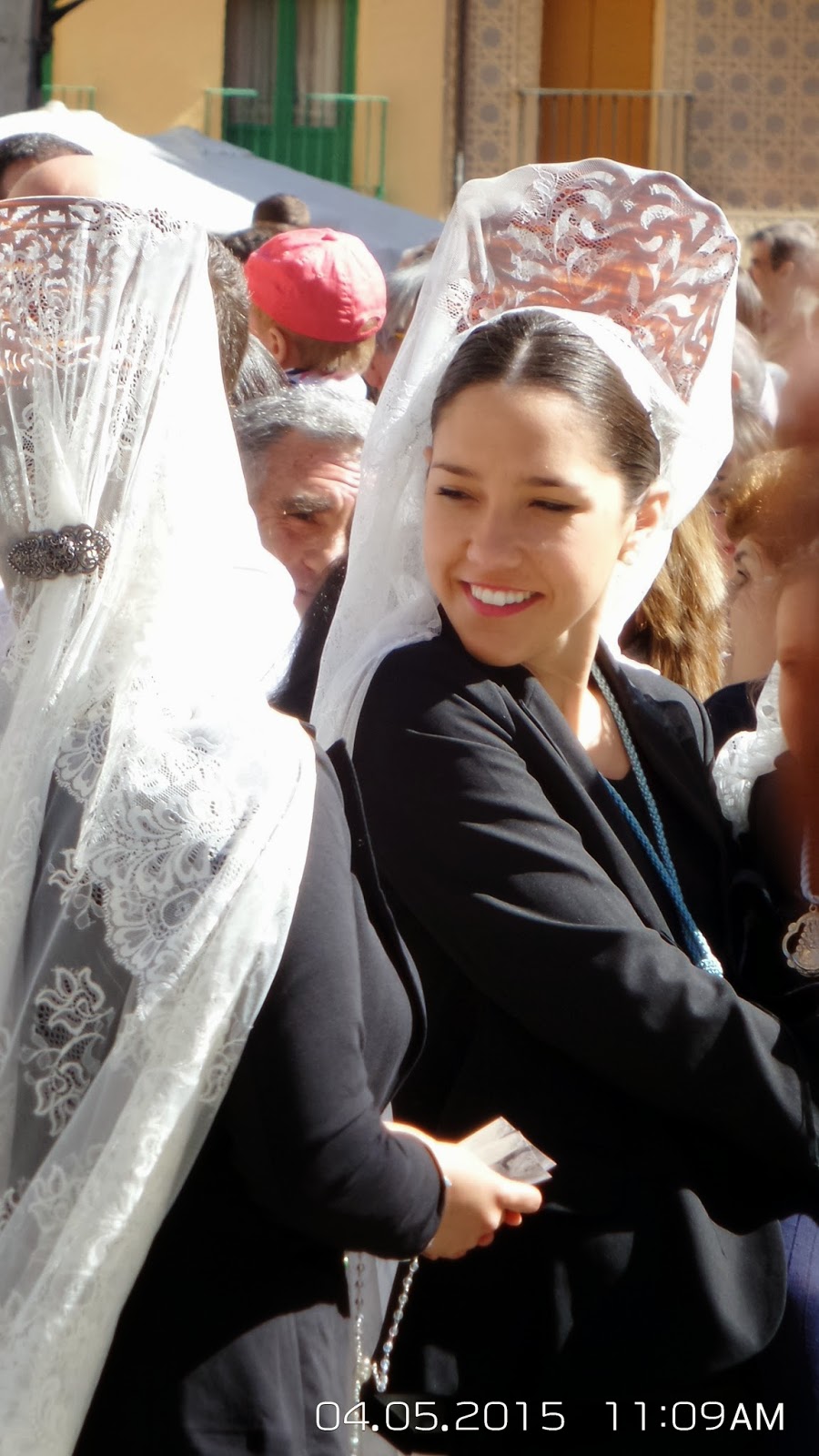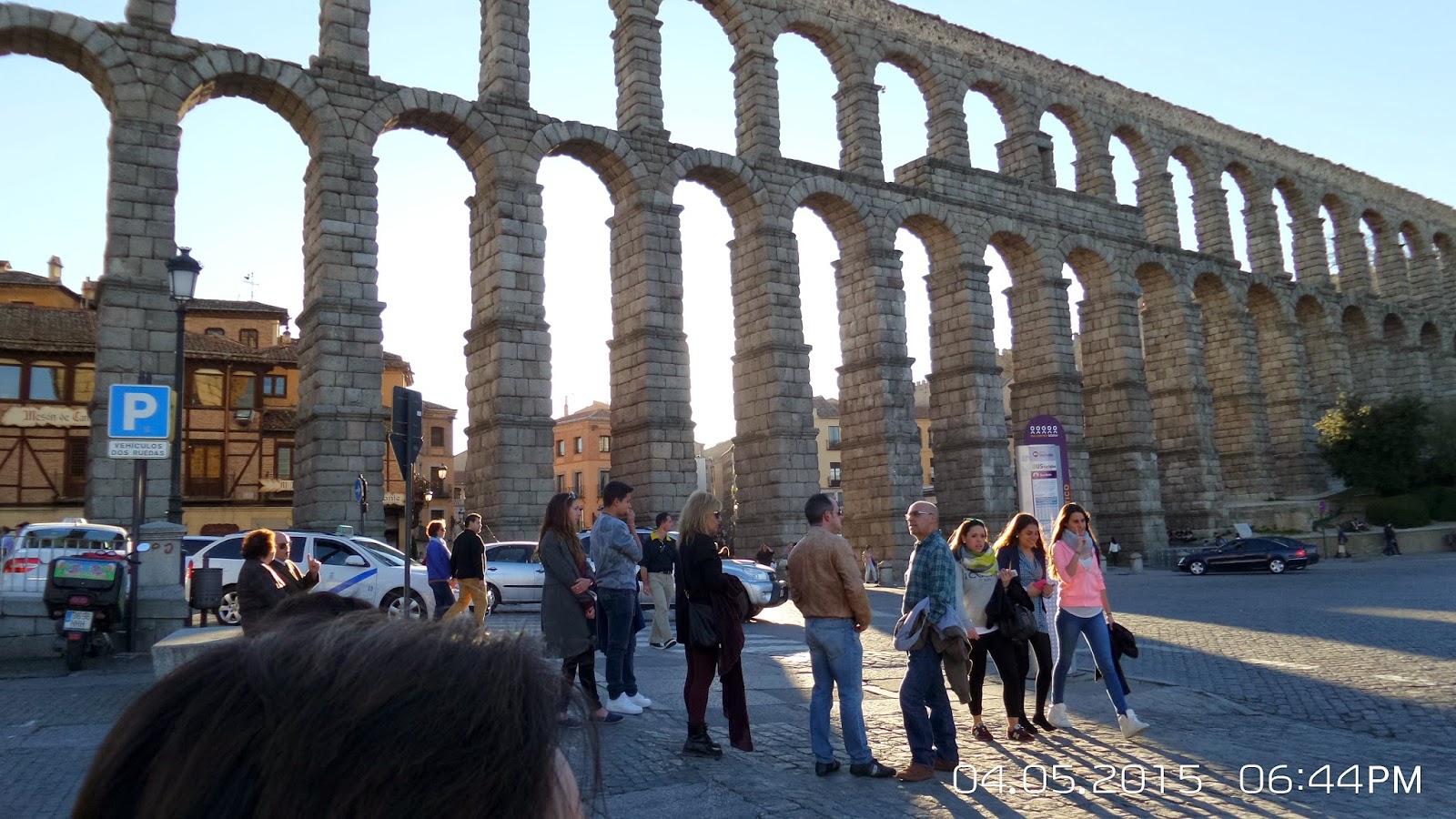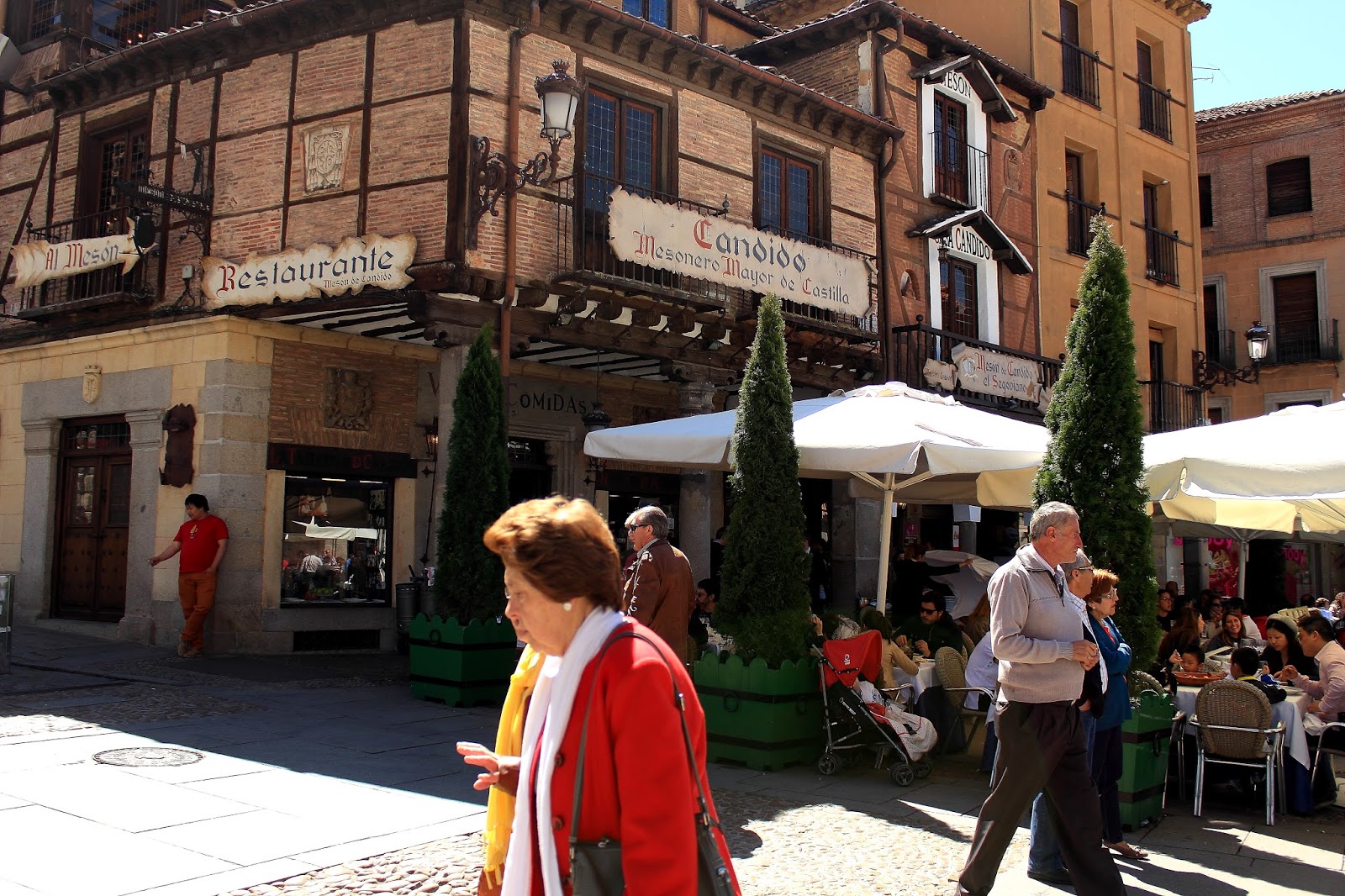My mother turned 90 this April. Travelling with family was how she wanted to celebrate. Two countries to choose between: Japan or Spain. She was seriously considering Japan as it would be so much nearer. But in the end, for sentimental reasons, she chose Spain in what she proclaimed would be her "last long trip". She specifically wanted to find #25 Calle Juan Bravo in Madrid, a condo (back then they were called apartments) we had lived in for 2 years, 60 years ago when my father was completing his doctorate in law. She thought this an appropriate way to celebrate her 90th birthday.
The largest and first group of family arrived on the same day and went by bus to the first house rented for the occasion. This was a nice farm house in Torre Cabanillas in Leon and Castile, a rural village, 8 kilometers away from Segovia. The village was rustic, the house modernized but still maintaining the original stone exterior.
The village was tiny but it did have it's own resident stork, whose nest rested on the steeple of its one tiny chapel.
It also had one small restaurant, El Cacho de Cabanillas, where the abuela of the family cooked what was on offer for the day.
On our fist visit she cooked us a bacalao (codfish) stew which was literally overflowing with garbanzos (chickpeas). You can imagine the symphony of sounds and smells emanating from that farm house that evening and into the next day. For Easter, however, she cooked a special meal for us, baby lamb that had not eaten anything but it's mother's milk. Well..what can I say? Ah.... It was delicious?
On our fist visit she cooked us a bacalao (codfish) stew which was literally overflowing with garbanzos (chickpeas). You can imagine the symphony of sounds and smells emanating from that farm house that evening and into the next day. For Easter, however, she cooked a special meal for us, baby lamb that had not eaten anything but it's mother's milk. Well..what can I say? Ah.... It was delicious?
Torre Cabanillas is a 15 minute ride to Segovia, a Unesco World Heritage Site. We had rented a car, so we were able to go at any time. The most visible and certainly most dramatic structure is the Aqueduct of Segovia. A product of Roman engineering genius dating back to the late 1st, early 2nd century. This structure, of huge granite blocks, stands proudly today as it has done for centuries past, remarkably held together without mortar!
From the aqueduct area, there are small buses that take you around the whole town for a fee of 1 Euro. Since Mom was with us, this was the only way we could go. We stopped at the Alcazar, the castle in Segovia, which apparently is the model for Disney's castle.
From the aqueduct too, through a warren of winding, rather steep streets, where street performers can gather a considerable crowd:
one reaches Segovia's Plaza Mayor (most towns and cities of Spain has it's own main plaza)
Dominated by the majestic Segovia Cathedral.
The Cathedral is a perfect example of Gothic architecture, characterized by the decorative and ornate, with it's soaring spires, taller walls, lofty towers, pointed arches, and vaulted ceilings.
Inside, it is filled with magnificent examples of religious art.
But these magnificent houses of worship (as we saw in Rome and discover in Spain) are for the most part no longer places of worship but museums, and tourist attractions. Masses are relegated to side chapels and attended by a mere handful.
Religious events, on the other hand are very well attended, not only by tourists but also by the locals. We arrived in Spain at the height of Semana Santa (Holy Week). Most of the cities and towns had processions on Good Friday, Holy Saturday and Easter Sunday. We were able to watch some of the Good Friday processions on television. Here the carossas (floats) carrying images of the dead or crucified Christ, the Dolorosa (His grieving mother), and tableaus of His passion were carried by costaleros, (men who carried these floats under the carriages) in procession around the town and accompanied by Nazarenos, men dressed in purple or blue with ku klux klan type hoods over their heads. I must say with the Nazarenos, the intermittent beating of drums and a rather melancholy dirge in the background, the spectacle can give one the shivers.
In Segovia, after the Easter Sunday mass, (for which we came early so as to make sure we had seats, only to find that our family constituted maybe a 3rd of the congregation), we watched a procession in the Plaza Mayor, re-enacting the first meeting between Mary and the Risen Christ.
The Plaza was filled with people, tourists, vendors,
and local participants:
After the procession we proceeded to Candido, a restaurant right beside the Segovia Aqueduct.
where we partook of their specialty: Cuchinillo, a 21 day old piglet that was roasted to perfection and cut with the edge of a plate to demonstrate how crispy and tender it was.
 |
| At Dusk |
From the aqueduct area, there are small buses that take you around the whole town for a fee of 1 Euro. Since Mom was with us, this was the only way we could go. We stopped at the Alcazar, the castle in Segovia, which apparently is the model for Disney's castle.
From the aqueduct too, through a warren of winding, rather steep streets, where street performers can gather a considerable crowd:
one reaches Segovia's Plaza Mayor (most towns and cities of Spain has it's own main plaza)
 |
| Pushing Mom in her chair in Segovia's Plaza Mayor |
Dominated by the majestic Segovia Cathedral.
The Cathedral is a perfect example of Gothic architecture, characterized by the decorative and ornate, with it's soaring spires, taller walls, lofty towers, pointed arches, and vaulted ceilings.
 |
| pointed arches and vaulted ceisling in cathedral corridors |
Inside, it is filled with magnificent examples of religious art.
But these magnificent houses of worship (as we saw in Rome and discover in Spain) are for the most part no longer places of worship but museums, and tourist attractions. Masses are relegated to side chapels and attended by a mere handful.
 |
| Sunday mass in Salamanca Cathedral |
In Segovia, after the Easter Sunday mass, (for which we came early so as to make sure we had seats, only to find that our family constituted maybe a 3rd of the congregation), we watched a procession in the Plaza Mayor, re-enacting the first meeting between Mary and the Risen Christ.
 |
| Mary"s Image |
 |
| The image of the Risen Christ |
The Plaza was filled with people, tourists, vendors,
and local participants:
 |
| In black with their Mantillas of lace |
After the procession we proceeded to Candido, a restaurant right beside the Segovia Aqueduct.
where we partook of their specialty: Cuchinillo, a 21 day old piglet that was roasted to perfection and cut with the edge of a plate to demonstrate how crispy and tender it was.
It was also here in Segovia where we had our first taste of Jamon Iberico Bellota, the Kobe of Spanish jamons.
 |
| a leg of Jamon Iberico Bellota through the window |














No comments:
Post a Comment